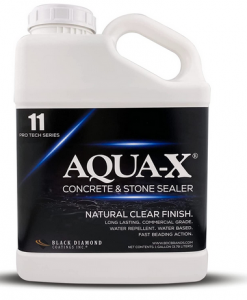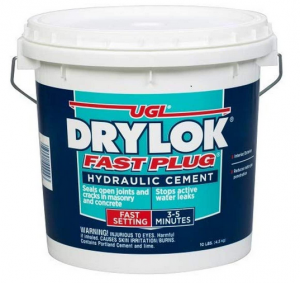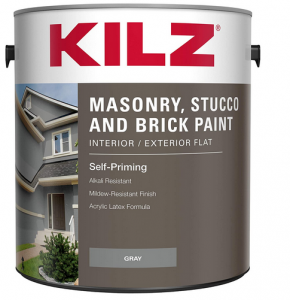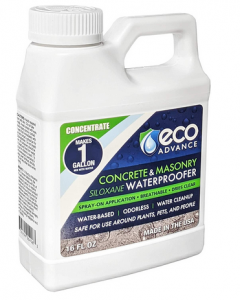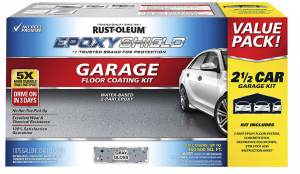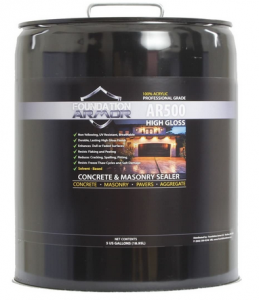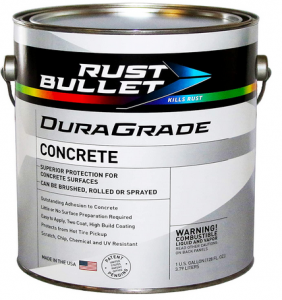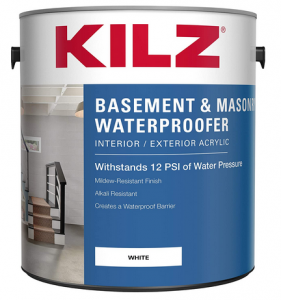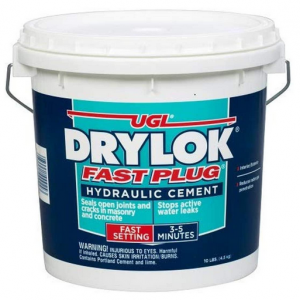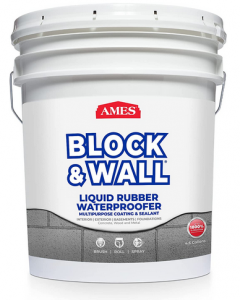Are you looking for the best paint for basement walls? We tried multiple paints from different companies for testing their durability and moisture-blocking efficiency.
Below is the list of our top 10 picks for helping you make the decision.
Basement paint is an affordable solution for extra moisture and leaking walls. It can provide better results in comparison to the other paints like paint for wooden fence.
A good basement paint should protect the walls while keeping the decoration intact. Besides, it must be easily usable through airless paint sprayer as these gadgets can reduce the time and enhance the efficiency of the process. You can also learn how airless paint sprayers work and ways to clean the airless paint sprayer.
Table of Contents
Best Paints For Basement Walls (Top 10 Picks):
Model | Coverage | Usage | Price | |
AQUA-X 11 | 600 sq. ft. | Quick-drying without any patches | ||
Drylok 00924 Fast Plug, 10-Pound, Gray | 16 cubic inches per pound | Can stop hard and active pressure water | ||
KILZ 13511201 | 250-400 sq. ft. | Can use it on the exterior and interior surfaces | ||
Eco Advance Concrete | 240 square feet | Protects against damage from oil, stains, and other chemicals | ||
Rust-Oleum 261845 | - | Product gives a lasting finish to the surface | ||
GAL Armor AR500 | 175 FT2/gallon | It protects against abrasion and rays | ||
Rust Bullet DuraGrade | 300-400 sq ft | It prevents cracking | ||
KILZ Basement and Waterproofing Paint | 200-300 sq. ft. | It works great with exterior surfaces | ||
Liquid Rubber Basement Sealant | 16 cubic inches per pound | Seals the moisture and locks the cracks | ||
AMES BWRF5 | 5 gallons per 500 sq./ft | Durable coating, especially for insulated areas |
1. AQUA-X 11
The first on our list is Aqua-X 11; this unit is an industrial-grade concrete sealer that allows you to block out all the gushing water, mold, and mildew.
Most importantly, you can achieve a long-lasting smooth surface with this product.
In addition to this, Aqua-X 11 does not require any toxic formula; you can apply a water-based coat of paint to your concrete walls.
Moreover, there is no need to add any primer or solvent to mix it with the solution.
All homeowners consider this unit a commercial solution and use it on a commercial grade.
Highlighting features:
- This unit is odorless and does not create any fumings.
- Maintenance of the area is not disturbed after the application of the formula.
- Quick-drying without any patches.
- One gallon can cover up to 600 square feet.
The fanciest part about this unit; it covers up to 600 square feet of area and protects your concrete from mold, freeze, spalling, and other damages.
Pros:
- This paint is easy to mix and apply
- It does not create any fumings
- This paint protects the walls from molds
Cons:
- This paint peels after some time.
Check Current Price and Rating on Amazon
2. Drylok 00924
There is no point in buying paint for your basement walls; when it cannot support the leakage issues.
Drylok 00924 is a compelling product that produces a membrane around the walls and supports holes and spalling.
The character that we appreciate is the low-odor formula. Yes, you can apply the solution without wearing any masks, as this unit has no foul smell and does not create any fumes.
Drylok 00924 does not require any primer or any other solution; open the gallon and apply it with the help of a roller or paintbrush.
However, you may not like the sandy texture; but the surface is effective enough to protect your walls from any thaws, spalling, or leakage.
Highlighting features:
- There are two texture options available.
- The texture turns into a rigid membrane.
- This product can stop hard and active pressure water.
- It can withstand 10lbs of hydrostatic pressure.
But, as compared to Aqua-X 11, the spread rate of this unit is not that effective.
Pros:
- The paint creates a robust coating
- No need to mix any primer or solvent
- The paint gives support to holes
Cons:
- The spreading rate is not effective
Check Current Price and Rating on Amazon
3. KILZ 13511201
The next on our list is a product that is effective for extra build-up and moisture. KILZ 13511201 is an excellent product that keeps the water out from the walls and protects the wall from seepage.
This unit absorbs the extra moisture and creates an area for the area.
KILZ is filled with nanotechnology that helps build a barrier for water and humidity.
Moreover, compared to Drylok 00925, this unit can cover an area of 250-400 square feet. But, the only thing that we do not appreciate about this unit; application of the primer.
It would help if you used a premium primer; before applying a coat of KILZ 13511201.
Highlighting features:
- This unit is high-quality acrylic latex water paint.
- The alkali-resistant formula is easy to apply.
- One gallon can cover up to 400 square feet.
- Painters can use it on exterior and interior surfaces.
You will achieve a neat and natural look without much effort.
Pros:
- This paint can be used for both exterior and interior surfaces
- It is an odorless paint
- It is easy to mix the solution
Cons:
- A coat of primer needs to be done before applying the paint.
Check Current Price and Rating on Amazon
4. Eco Advance Concrete
When it comes to concealing the basement walls, the whole process can be tricky. One wrong product can mess up the area.
As the name—Eco Advance Concrete is an environmentally friendly product with low VOC.
Our most favorite part about this paint is the packaging and low odor. You can seal anything with the product; concrete, stucco, stone, pavers, etc.
This unit is breathable and safe around children and pets. You can also use this product around plants, as it does not create any fumes.
Highlighting features:
- This unit is ideal for brick and stone surfaces.
- It protects against damage from oil, stains, and other chemicals.
- It is a non-flammable formula.
- The breathable formula is perfect for masonry work.
The application process is smooth, and the drying time is relatively quick. Also, this unit can cover around 100-300 square feet, depending upon the surface of the basement.
Pros:
- This paint can be used on bricks
- The drying time is really quick and smooth
- No patches are left after the final coat
Cons:
- The paint is quite thick
Check Current Price and Rating on Amazon
5. Rust-Oleum 261845
Next on our list is; Rust-Oleum 261845. This unit is different from the other products on our list. The application of this product is straightforward and will not let you down in terms of application.
However, this unit is not entirely for the basement paint; but it seals out the water and lasts for years.
If you are looking for basement paint for walls, you can layer and protect from damaging the walls; this is an instant solution.
Highlighting features:
- This unit is a 2 part epoxy formula.
- The formula provides a glossy finish.
- No odor, low VOC
- This product gives a lasting finish to the surface.
Compared to Eco Advance Concrete and KILZ 13511201, the spread rate of this product is 500 square feet. Not to mention, you can start using your basement right after 24 hours of application.
Pros:
- This paint formula is glossy
- The coat lasts for years
- The paint protects the wall from moisture and mold
Cons:
- You need to prime the surface before applying the formula
Check Current Price and Rating on Amazon
6. GAL Armor AR500
Gal Armor AR500 is a commercial-grade product used to seal basement walls and protect them from leakage and seepage issues.
This unit is breathable and comes with unmatched bonding characteristics. It is an acrylic masonry paint that you can reapply to the same place even after 2-5 years.
Most importantly, with GAL Armor AR500, you can get a finished and natural look. In addition to this, we loved the application process, as it is elementary to apply this product even in a large area.
Also, this unit is safe around pets, children, and plants. You can use the space right after 24 hours of application.
Not to mention, even if your surface is unsealed, you can use this product without any hassle.
Highlighting features:
- This unit resists salt damage.
- The material stands up to abrasion and rays.
- Self-priming and low maintenance.
- This product gives a natural appearance.
Pros:
- This paint needs no solvent
- It protects the wall from seepage issues
- It fills the holes in the walls
Cons:
- It is a high-odor product
Check Current Price and Rating on Amazon
7. Rust Bullet DuraGrade
Next on our list is a premium-grade basement paint wall. This unit is one exceptional unit if you are looking for a one-stop solution to all your leakage, seepage, spalling, and freezing issues.
All you need to do is prep this product before applying it to your surface and wait for excellent results. We loved the overall texture and outcome as it gives a natural look to the surface.
No need to use any primer, basecoat or topcoat. Surprisingly, you can also cover the pickups from the hot tire through this product.
Duragrade is a UV-resistant product with low VOC formula and no odor.
Highlighting features:
- No need to prep the surface beforehand.
- This unit prevents cracking.
- The material prevents UV rays.
- This product is anti-slip.
Also, as compared to Aqua-X, this product can cover up to 1500 square feet of area.
Pros:
- This paint needs no solvent
- It protects the wall from seepage issues
- It fills the holes in the walls
Cons:
- It is a high-odor product
Check Current Price and Rating on Amazon
8. KILZ Basement and Waterproofing Paint
Another option from KILZ is an excellent solution for sealing the cracks and other holes in the basement.
Moreover, the drying time and application are pretty straightforward. However, you need to prepare the surface by using a primer.
Not to mention, using a nap paint roller cover or an airless paint sprayer is more effective with this product than a paintbrush.
Compared to KILZ 11201, this product is a bit less effective, as you need to prime the surface before applying the solution correctly.
Moreover, this product resists up to 12 PSI of pressure and keeps the water out of your basement.
Highlighting features:
- The drying time is speedy.
- The formula is waterproof and sealed porous.
- This unit works great with exterior surfaces.
- The coat creates a barrier to water infiltration.
The spread rate of this unit is 75-125 feet of area, but it requires two coats of solution on the surface.
Pros:
- This paint creates a barrier to water
- It is an odorless paint
- No need to mix any solvent before painting
Cons:
- The spread rate is not effective
Check Current Price and Rating on Amazon
9. Liquid Rubber Basement Sealant
The next on our list is an exceptional product that secured the top as the paint brand. Basement paint and waterproofing are extremely challenging at times.
The liquid rubber basement sealant is a highly flexible product that creates a tough membrane that can elongate up to 900%.
With this unit, you will not find any adhesion issues; and it also fixes hairline cracks.
The formula is a water-based solution; hence no application issues.
Highlighting features:
- This unit is not explosive at all.
- The water-based solution requires no thinning.
- Seals the moisture and locks the cracks.
- No adhesion or seepage issues.
After applying this formula, you will find any drop from your walls or floors, as it acts as a bulletproof system on bridge joints, vents, seams, and gaps.
Pros:
- It is a high-flexible paint
- No need to add any primer
- It prevents the water leakage issues
Cons:
- The drying time is slow
Check Current Price and Rating on Amazon
10. AMES BWRF5
The last on our list is AMES BWRF5; this unit mirrors back up to 98% of the light. Hence, the color of your basement can stay fit for years.
However, this unit is less effective in elongation than the Liquid Rubber Basement Sealant.
The elongation rate is up to 700%, but it is easy to mix, spread and coat. With this solution, you can resist up to 2500 PSI.
The permeability rate is ten mils per minute, and the coat is super flexible. However, you need to prepare the surface before applying the formula.
Highlighting features:
- No need to mix the solution before applying.
- Durable coating, especially for insulated areas.
- This unit is inflammable.
Also, if you want to protect your basement from rain damage, 2-3 coats are recommended.
Pros:
- The elongation rate is effective
- No need to mix any solvent
- The spread rate is effective
Cons:
- It does not fill the holes in the walls
Check Current Price and Rating on Amazon
Things to Consider Before Buying the Best Basement Paint for Walls:
Well, we have covered the top ten best basement paints for walls. We hope you have gained enough information about the basement paint for the walls.
However, there are other factors that you need to consider before buying the best basement paint for walls.
Formula:
It would be best if you decided on the formula of the paint. There are three basic types: water, oil, and latex-based paint.
Water-based paints are easy to apply and provide a high range of coverage, and they are thin in texture. On the other hand, the oil and latex paints deliver a high shield, but it is tricky to handle the consistency.
Flexibility:
For basement walls, a flexible product is recommended. A highly elastic paint can expand or shrink as per your repairing needs—no need to add extra tooling efforts once you get your hands on a flexible basement paint.
Application:
Whether your basement has an even or uneven surface, the basement paint comes with an easy-to-handle thickness. Get basement paint that goes well with an airless paint sprayer if you are an expert.
Coverage:
Coverage is the most crucial factor of all. The task of painting becomes a pain when you need a lot of paint to cover an area.
If your basement is enormous, choose a product that can cover 200-300 square feet per gallon.
The leaking and cracked basement turned into a quick eyesore. If you are looking for an instant and durable solution to paint your basement, go through the products and pick a product that goes well with your problem. You might also like to know about the best paint remover,
Buying Guide:
Painting the basement sometimes becomes daunting since basements are often damp and dark. But with the right preparation, quality materials, and proper ventilation, you can easily create a beautiful space in your basement.
Sometimes, you feel like doing it independently, and you must have the right paint.
Basement wall paints are designed with special elements that fight moisture, mildew and other issues related to damp walls. These paints also protect against rusting of metal items like nails, studs, and others in the basement.
Choosing good quality paint with a high mildew-resistant rating is important. Use good quality acrylic latex paint of at least two coats thick over properly sealed walls and surfaces for best results.
If your basement has moisture-related problems, you may also need to look into specialized paint for masonry walls.
When painting the walls of your basement, there are a few important factors you should consider. First, you want to ensure the paint is specifically made for basements.
This type of paint is formulated with special moisture-resistant properties that help protect your walls from dampness and humidity.
You also need to choose a paint that will stand up to the rigors of heavy traffic and be easy to clean and maintain. Finally, you may choose a color to make your basement appear larger and more inviting.
With the right type of paint, you can create a beautiful and functional space in your basement that everyone in your family can enjoy.
Formula:
Consider the type of wall paint formula to best suit your basement. For areas of frequent moisture, opt for waterproof or water-resistant paint that can withstand more wear and tear.
Also, consider choosing a mildew-resistant formula that prevents staining if your walls are prone to getting wet.
Sheen:
Select a sheen level appropriate for the area. A semi-gloss sheen is often the best basement choice because it can resist scuffs and dirt better than flat finishes.
Color:
Selecting a warm, light color will help make your basement look brighter and more inviting. Dark colors can make rooms look smaller, so it’s best to avoid them if possible.
Durability:
Choose a paint specifically labeled for high-traffic or heavily used areas. This ensures that your walls can withstand the wear and tear of everyday use, even in an area subject to moisture and humidity.
Coverage:
Select a paint with good coverage so you won’t need to apply multiple coats of touch up frequently. Look for paint with a high-pigment content to ensure that fewer coats are needed.
Cleanability:
Opt for washable paint to easily clean any wall scuffs or fingerprints. You may also want to consider an antimicrobial finish, which will help prevent bacteria and mildew growth on walls.
Drying time:
Look for paint that dries quickly to avoid waiting too long between coats. For wet climates, consider choosing a paint that can be recoated within an hour or two of application.
FAQs
What is the best basement paint for walls?
The best basement paint for walls depends on your individual needs and preferences. However, some popular options are masonry water-based paints, acrylic latex paints, and oil-based alkyd paints.
Masonry water-based paints are formulated specifically to resist moisture and mildew and can be applied directly to concrete and masonry surfaces.
Acrylic latex paints are another popular option, as they offer excellent color retention, durability, and breathability while providing a mildew-resistant coating.
Oil-based alkyd paints may also be an option for painting basement walls; however, these tend to provide a less durable finish than other paints and require more frequent maintenance.
How often should I repaint my basement walls?
The frequency of painting your basement walls depends upon the type of paint used and the amount of moisture or humidity in the area. Generally speaking, masonry water-based paints can last up to 10 years, while acrylic latex paints can last up to 15 years.
Due to their decreased durability, oil-based alkyd paints may need to be reapplied every 5-7 years. If your basement walls experience high levels of moisture or humidity, it is recommended to reapply paint more frequently to ensure a long-lasting finish.
What preparation is needed before painting basement walls?
Proper preparation is essential for achieving a quality finish when painting basement walls. Before starting, it is important to inspect the area for any cracks or crumbling concrete and make repairs as necessary.
Additionally, you should clean the surface with a mild detergent or solution and rinse thoroughly before painting. It is also recommended to prime the wall with a sealant or primer before painting, as this will help protect the paint from mold and mild growth.
Finally, cover any vents or windows with plastic film to ensure they are not by the painting process.
What type of finish should I use on my basement walls?
The type of finish you should use depends on your individual preference. However, many popular options are eggshell, satin, semi-gloss, and gloss. Eggshell finishes are ideal for providing a low sheen with subtle color variation in the paint job, while satin provides a slightly higher sheen and a more even finish.
Semi-gloss is another popular option, as it provides a bit of shine while still being easy to clean. Gloss finishes are the most reflective and provide a bright, shiny finish; however, this can result in more visible imperfections in the painting job. The type of finish you choose should be based on your needs and preferences.
Does painting basement walls require any special tools or equipment?
Painting basement walls do not require any specialized tools or equipment. However, it is recommended to have a brush, roller, and pan for optimal results. Additionally, drop cloths should be used to protect floors from any paint splatter.
If you want to save time and effort, an airless sprayer may also be a good option for evenly coating the walls with paint. Ultimately, the tools and equipment needed will depend on your individual needs and preferences for painting basement walls.
What types of safety precautions should I take when painting my basement walls?
When painting your basement walls, it is important to wear protective clothing, goggles, and a face mask to protect yourself from any fumes or dust in the air.
Additionally, good ventilation should be provided when painting with oil-based paints as they can produce toxins such as carbon monoxide and formaldehyde, which can harm your health.
Lastly, make sure to keep any combustible materials away from the area while painting and always follow the manufacturer’s instructions when using paint or other chemical products.

I grew up on a small farm in New Jersey. We had a big family because my parents, my uncles and aunties all were living together on this farm so, you can imagine, it was always over crowded with people. But living in farm was really great because we had to do everything on our own and I learned so many things from my parents and uncles and aunties and that is where I found my passion for fixing things, whether it is renovating or designing, I was always there. Read more











